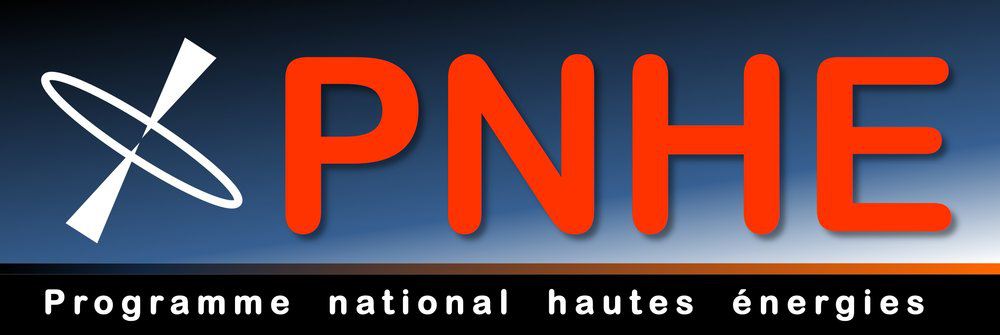Présidents de session
Multi-messenger astrophysics: LSST + GW detectors
- Frédérique MARION (LAPP)
Multi-messenger astrophysics: Compact objects
- Jérôme Novak (LUTH, CNRS - Observatoire de Paris)
Multi-messenger astrophysics: Transients
- Diego Gotz (CEA Saclay)
Multi-messenger astrophysics: Groupements de recherche & co.
- Susanna Vergani (CNRS-Observatoire de Paris)
In this talk, I will present the Vera Rubin Observatory Legacy Survey of Space and Time (VRO LSST). During the next decade, VRO will obtain high-resolution optical images of the Southern Sky at unprecedented depths. LSST is designed to address four science areas: probing dark energy and dark matter, taking an inventory of the solar system, exploring the transient optical sky and mapping the...
After a brief summary of results of LIGO-Virgo O3 observational run, I will present the future plans for the LIGO-Virgo-KAGRA network. I will then discuss the status and plans for the third generation detectors, Einstein Telescope and Cosmic Explorer. Finally, I will review the scientific potential of the upcoming detectors and the connections with the PNHE community.
The Laser Interferometer Space Antenna (LISA) is the large mission of ESA for observing gravitational waves (GW) from space. It has a huge science case and will observe a large number of GW sources making an important contribution to the multi-messenger astronomy. LISA is finishing its phase A and will be launched mid-2030s. In this talk, we will briefly describe the mission, give its current...
The gravitational-wave observatories LIGO and Virgo have so far detected several tens of stellar-mass compact binary mergers, but many more sources, too faint to be detected, lurk below the noise, creating a stochastic background. On the other end of the mass scale, super-massive binary black hole mergers are expected to create a stochastic background observable with pulsar timing arrays. I...
L’effondrement du coeur de fer des étoiles massives donne naissance aux objets compacts et à une diversité d’explosions. Je décrirai des travaux théoriques et numériques développés pour comprendre les propriétés de l’objet compact et de l’explosion associée. Des instabilités hydrodynamiques telles que SASI ou la convection due aux neutrinos jouent un rôle important pour déclencher l’explosion...
The first detection of gravitational waves (GWs) from a binary neutron
star merger (GW170817) by the LIGO-Virgo collaboration together with
an electromagnetic counterpart has brilliantly given birth to
multi-messenger astronomy. In the coming years, the GW detector
network sensitivity will be further increased making this rapidly
evolving new astronomy challenge our understanding of hot...
Dans cet exposé, je présenterai les enjeux scientifiques de l’étude des sursauts gamma et des sources astrophysiques d’ondes gravitationnelles qui produisent également de la lumière. L’accent sera mis dans ce second cas sur les coalescences de système binaires d’objets compacts. J’essaierai de résumer quelles sont les principales questions qui se posent sur la compréhension physique de ces...
This talk will give a brief summary of the activities of the GdR RESANET at the interface between nuclear physics and astrophysics. It will present activities in measurements of nuclear cross sections for astrophysical processes and in the modelling of neutron stars and associated phenomena, such as for instance gravitational wave physics.
Ce séminaire présentera le GdR Ondes Gravitationnelles, son rôle, sa structure, ses groupes de travails et ses actions récentes

